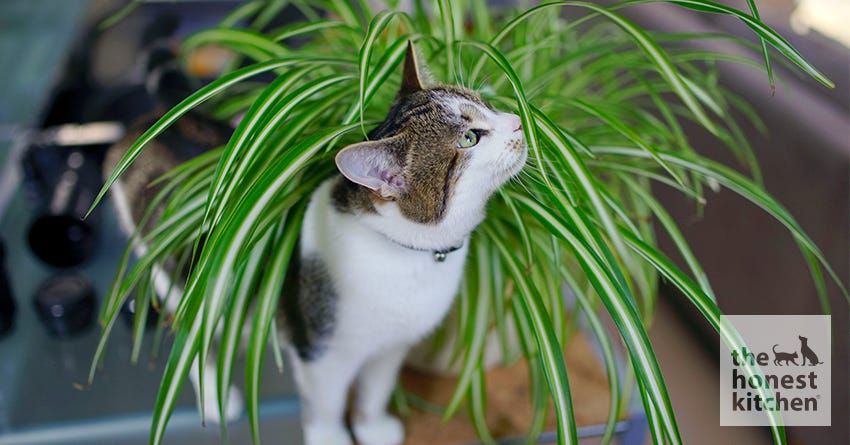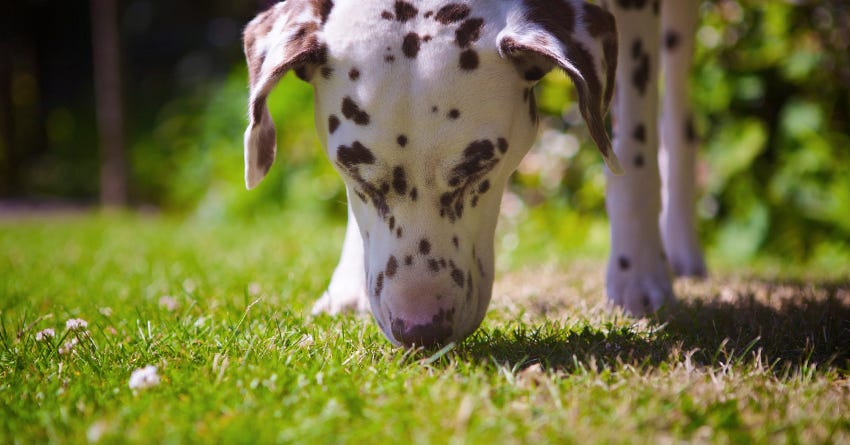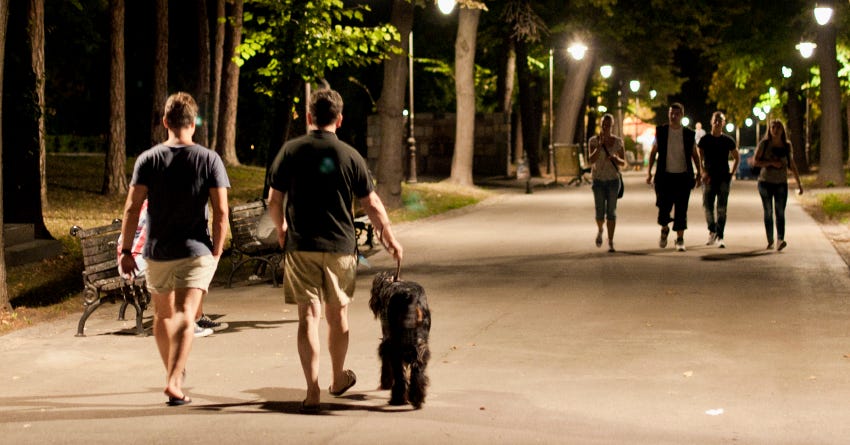- Sustainable Tails
- Posts
- Sustainable Tails
Sustainable Tails
Feline Pica, Pet Friendly Household Plants, and Home Friendly Tips For Your Senior Dog
Welcome back to another edition of Sustainable Tails. This week we are looking at feline pica and what are some things to do if your cat has it, tips for making your home more friendly for your elderly dog, and pet friendly household plants. Let’s dive right in!
What Is Feline Pica And What To Do About It

Feline pica is a behavioral disorder in cats characterized by the persistent ingestion of non-food items. Cats with pica may chew or consume items such as fabric, plastic, paper, or plants. While the exact cause of pica in cats is not fully understood, it is believed to be linked to several factors, including nutritional deficiencies, boredom, stress, or medical conditions such as gastrointestinal disorders or neurological problems.
Pica can be harmful to cats, as ingesting non-food items can lead to gastrointestinal blockages, dental issues, or toxicity from ingested substances. If left untreated, pica can also result in serious health complications.
Treating feline pica involves addressing the underlying cause. If a nutritional deficiency is suspected, your veterinarian may recommend dietary changes or supplements. Environmental enrichment, such as providing plenty of toys, scratching posts, and interactive playtime, can help alleviate boredom and reduce stress. In some cases, medication may be prescribed to manage underlying medical conditions or behavioral issues.
It is essential to consult with your veterinarian if you suspect your cat has pica. Your veterinarian can perform a thorough physical examination and may recommend diagnostic tests to rule out any underlying medical conditions. Together, you and your veterinarian can develop a comprehensive treatment plan to address your cat's pica and improve their overall well-being.
Doggone Delights
Did you know that a dog's sense of smell is so powerful that the area of cells in their brain dedicated to detecting smells is about 40 times larger than in humans? This incredible ability allows them to detect scents at concentrations as low as one part per trillion, making them exceptional at sniffing out everything from hidden treats to missing persons.
Tips For Making Your Home More Friendly For Your Senior Dog

As dogs age, their needs change, and it's important to adapt your home to accommodate them. Here are some tips to make your home more friendly for a senior dog:
Provide easy access: Older dogs may have mobility issues, so make sure they can easily navigate your home. Consider installing ramps or pet stairs to help them reach elevated areas like beds or sofas.
Choose the right bedding: Senior dogs can benefit from orthopedic or memory foam beds, which provide extra support for achy joints. Place these beds in warm, quiet areas where your dog can rest undisturbed.
Keep pathways clear: Remove obstacles and clutter from your home to prevent your senior dog from tripping or getting stuck. This includes securing loose rugs and electrical cords.
Provide a comfortable environment: Keep your home at a comfortable temperature, as older dogs may be more sensitive to heat and cold. Consider using pet-safe heating pads or blankets to keep them warm.
Offer regular exercise: While senior dogs may not be as active as they once were, they still need regular exercise to stay healthy. Short, gentle walks or indoor play sessions can help keep them active and engaged.
Ensure access to water: Make sure your senior dog always has access to fresh, clean water. Consider placing water bowls in several locations around your home to make it easy for them to stay hydrated.
By making these simple adjustments, you can help ensure that your home is a safe and comfortable environment for your senior dog to enjoy their golden years.
Pet Poem Place
In May's soft rain, a puppy's eyes alight,
His first time seeing this watery delight.
Pitter-patter on his fur, like a gentle drum,
He wags his tail, feeling joyful as he hums.
He sniffs the air, his senses alive,
Spring showers nurture, helping flowers thrive.
He watches in awe, as petals unfold,
Colors bursting, a sight to behold.
He frolics in puddles, splashing with glee,
Each drop a promise, of what's yet to be.
Innocent and pure, his heart greatly soars,
In the spring showers, as he runs on all fours.
A new world opens, fresh and bright,
The puppy discovers, with pure delight.
Spring showers bring life, in their own way,
Nurturing the flowers, for a beautiful display.
And as the puppy plays and gleefully runs free,
He learns the lesson, of how to let be.
To find simple joy through the rain of each day,
In the nurturing spring showers of each day in May.
6 Household Plants That Are Pet Friendly

When choosing plants for your home, it's important to consider the safety of your pets. Some plants can be toxic to cats and dogs if ingested. Here are six pet-safe plants that you can safely incorporate into your home:
Spider Plant (Chlorophytum comosum): Spider plants are safe for cats and dogs and are easy to care for. They are also known for their air-purifying properties.
Boston Fern (Nephrolepis exaltata): Boston ferns are non-toxic to pets and add a lush, tropical feel to any room. They thrive in humid environments and indirect light.
African Violet (Saintpaulia): African violets are safe for pets and add a pop of color to your home. They prefer bright, indirect light and regular watering.
Areca Palm (Dypsis lutescens): Areca palms are safe for pets and can grow quite large, making them a striking addition to any room. They require bright, indirect light and regular watering.
Friendship Plant (Pilea involucrata): Friendship plants are safe for pets and are known for their unique round leaves. They prefer bright, indirect light and regular watering.
Parlor Palm (Chamaedorea elegans): Parlor palms are safe for pets and are one of the most popular houseplants. They thrive in low light and require minimal watering.
While these plants are considered safe for pets, it's always a good idea to monitor your pets around plants and contact your veterinarian if you suspect your pet has ingested a toxic plant. Additionally, it's important to ensure that any plant you bring into your home is safe for all members of your household, including pets.
In Case You Missed It…
Well, that’s a wrap for this week. Please be sure to share this growing community of pet lovers from around the world with your friends and family. We send you an unobtrusive email once a week right to your mailbox. That’s all there is to it! We welcome any and all input from all of our subscribers. Send us topics you’d love to know more about, or just drop a line to say hello. There are exciting things coming as Sustainable Tails grows in popularity!
Sustainable Tails is dedicated to helping you create a harmonious and eco-friendly life for you and your pets. By embracing zero-waste and pet-friendly grooming products and sustainably exploring the outdoors together, you're not only enhancing the well-being of your furry companions but also contributing to a healthier planet.
Thank you for joining us on this weeks adventure. Continue to spread the word on what we are doing here, and always know your comments and participation in our community are welcomed with open paws. We’ll see you right here next week, so continue making sustainable choices and cherishing each and every day with your beloved pets!
Joshua McCarty
Founder, Sustainable Tails
P.S. Have a topic you’d like us to cover in our next newsletter? Share your ideas and questions with us. We’d love to hear from you!
P.P.S. Take a peek over at our partner website for an ever growing list of sustainable and eco-friendly pet supplies and accessories, as well as many other pet friendly products!





